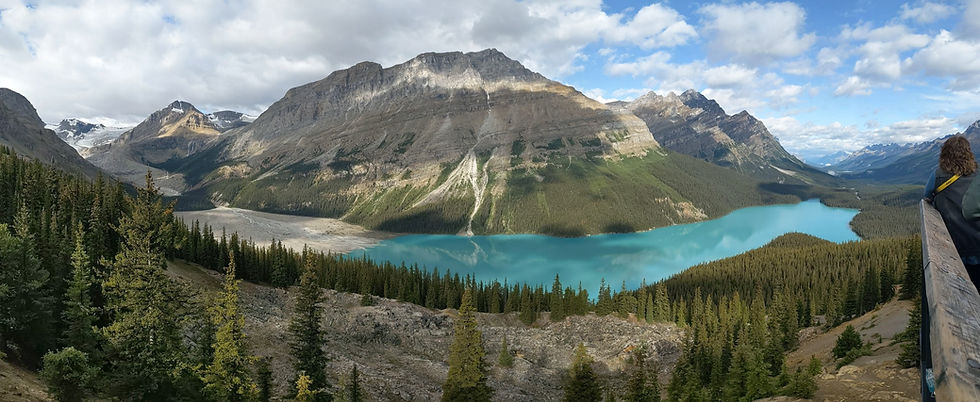My India Trip: Passage to India (part 2)
- kwankew

- May 10
- 4 min read

I took the morning train from Sawai Madhopur Station to New Delhi and then flew to Ayodhya in Uttar Pradesh.
At the Gupta Ghat, I took a boat ride to a sandbar in the Saryu River where I took a “holy dip”. It was not planned, so I had no towel or dry clothes. The hot weather helped to dry my drenched clothes.

Ram Janmabhoomi is supposedly the birthplace of Rama, where the biggest Hindu temple is under renovation. I caught a glimpse of Rama, the black God, after waiting in a long line.

Khanak Bhawan: Golden temple where Rama and his wife Sati lived after his 14-year exile to Sri Lanka.


Aart at the Naya Ghat where many dipped in the Saryu River.

Lucknow in Uttar Pradesh is a city with a fine blend of Indo-Islamic and colonial influences. My guide gave me its history, it was one of the cities involved in the Sepoy Mutiny or the First Indian War of Independence, a major uprising in India against British rule in 1857-58. It started in Meerut, near Delhi and spread to Delhi, Agra, Kanpur, and Lucknow, as a mutiny of Sepoys in the British East India Company army and quickly became a widespread rebellion involving the local rulers and peasant armies. The Sepoys were unhappy with their pay, and the mutiny was triggered by rumors that cartridges of the new Enfield rifles were greased with cow and pig fat, against the Hindu and Muslim religion.
The British put down the rebellion, dissolved the British East India Company, and took over control of India. This marked the start of the British Raj.
Rumi Darwaza is the gateway to the old city, an iconic structure of Lucknow.

The Bara Imambara is an imambara and mosque complex built by Asaf-ud-Daula, the Nawab or Viceroy of Awadh, in 1784. Through the main gate, a garden with a walkway led to the palace. On the right side is the Asfi Mosque. On the left-hand side is a series of arched rooms with a step well, no longer in use, but fills up in the Monsoon season.


In the main imambara, a large vaulted hall where the tomb of Asaf-ud-Daula and the architect lay. The dome is one of the largest arched structures in the world, with no supporting beams in the ceiling. Surrounding it are eight chambers with different roof heights, above these structures is a series of labyrinths replete with interconnecting passages. It is claimed that there were thousands of passage entries, but only two exits. They are referred to as the Bhulbhulaiya. The fourth floor opens to the roof from where one could see the city.




Chota Imambara is a smaller marble palace built by the third King of Oudh, Mohammad Ali Shah, in the 19th century. He took after the British way and changed his traditional garment to the British king's (Ermine Cape, for instance). He also built a small Taj Mahal for his daughter after she died, on the right side when one enters the gate. It has a reflecting pool in front of it, like the Taj Mahal. The façade of the palace is white marble with black Islamic lettering covering it.

In the evening, we visited Ambedkar Memorial Park, renamed to Dr. Bhimrao Ambedkar Samajik Parivartan Sthal, an Indian Dalit activist and the first law minister of India. The memorial was constructed by Mayawati, the former Chief Minister of Uttar Pradesh, when she led the Bahujan Samaj Party. It was built from 1995 to 2008, costing 7 billion rupees. According to my guide, she is of the lower cast. She is not married, and she decided to build this memorial so she can be remembered for posterity. There are many gigantic statues of her and Dr. Bhimrao Ambedkar, the latter modeled after the Lincoln Memorial.



Pratibimb Sthal is the main entrance to the memorial, guarded by statues of 62 elephants on either side. The whole park is built with red sandstone from Rajasthan, it is a stone park, not a green park. The life-sized elephants cost thousands of rupees each, and for that, she was criticized for the spending, and also used this memorial to advance her own party. She lost her reelection.

The next day, my guide took me to visit La Matiniere College. The Frenchman, Major General Claude Martin, built a palace, Constantia, in the French Baroque style in the eighteenth century in Lucknow. He was an officer, first of the French, then the British East India Company, and built himself a fortune, serving under the Nawab of Awadh, Asaf-ud-Daula. In the nineteenth century, according to his will, Constantia became La Matiniere College, a private school for boys.

Before leaving for the train station to catch the sleeper train, the Chitrakkoot Express, we stopped at a tea place for samosa, masala chai, and sweet bread with Raju, the driver, and Leill, my guide. Leill took me to the right carriage and kindly waited with me inside until my cabinmate, Manish, arrived. We said goodbye, he was one of the best guides.

To be continued







Comments